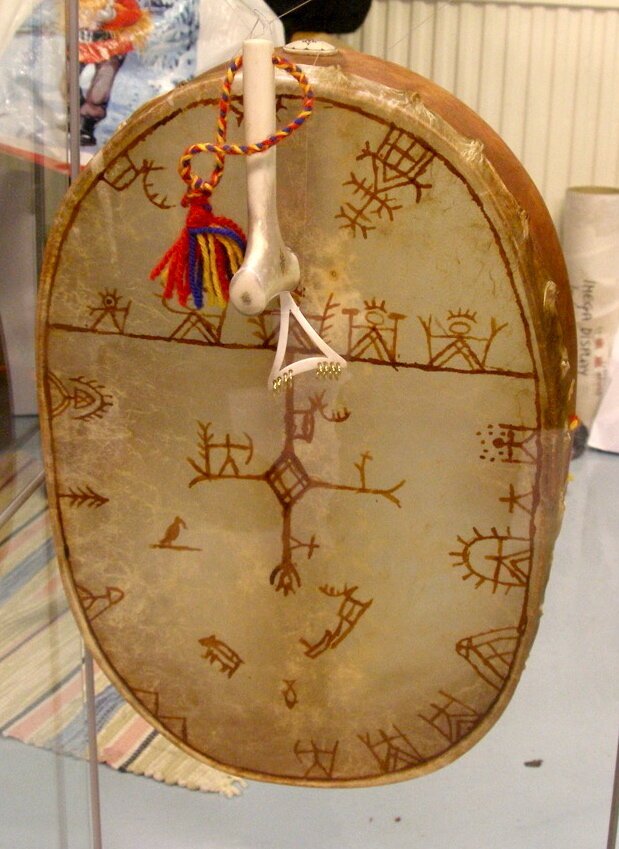What is duodji?
Silverwork brooches adorn the front of a Sámi woman’s liidni (shawl). The brooches, called risku, are decoration, but they also carry specific cultural meaning, especially for young, unmarried women. Photo by samisknettverk (CC BY-SA 2.0).
Duodji, or traditional Sámi handicrafts, include clothing, hats, belts, jewelry, shoe bands, cups, knives, bags, needle cases, cheese forms, and harnesses. Aesthetically beautiful, functional, and portable, duodji has been produced by Sámi duodjar (artisans) for thousands of years, and like the gákti, is intended for daily use.
Wooden guksi/kuksa, or coffee cup, carved from a birch burl. Made by Alexej Vodjahka. Photo by Duodjiinfo, 2011, (CC BY-SA 3.0).
As with the Navajo / Dine and other Indigenous peoples, the Sámi have had their designs appropriated and mass-marketed. Sámi efforts to maintain the integrity and quality of duodji include craft schools, guides, exhibitions, and trade associations. A Sámi Duodji Association trademark indicates to buyers that the item was made according to traditional principles, of traditional materials, by a trained and experienced Sámi duodjar. That said, many Sámi duodjars elect not to pay for the trademark, and rely on their reputations to speak for themselves. Souvenirs and other items that have no traditional or functional use are not eligible to be considered as duodji.
Mittens knit by Laura Ricketts, who spent years researching and recreating traditional designs. At the invitation of PSS, she was the keynote speaker at the Nordic Knitting Conference held in Seattle in 2017. Ricketts has authored several books about Sámi knitting and mitten design. (Photo by Christin Curran)
Sámi drum from a market in Jokkmokk, Sweden, decorated with traditional imagery. Photo by samisknettverk, (CC BY-NC-SA 2.0).
You can help support the integrity of Sámi duodji:
buy products made by Sámi
consult Sámi for referrals
purchase materials for your crafts from Sámi suppliers
include source details when you give or display duodji
label items as “Sámi-inspired” as appropriate
help others to identify mislabeled or fake duodji
Sami leather and woolen bag with metal embroidery; on the front, red and blue wool cloth is decorated with pewter thread fastened with calf stitching. The bag was previously part of the Norwegian Folk Museum's collection, but in 2018 was transferred to Saemien Sijte in the Bååstede project. Photo by Thorguds, http://saamiblog.blogspot.com/, (CC BY-SA 3.0)




